Earlier this month, PropTrack released data showing that rental prices across Australia rose 11.5% in the 2023 calendar year, led by the combined capital cities (13.2%).
Across the whole of 2023, Perth (20%), Melbourne (18.3%), and Sydney (16.7%) topped capital city rental growth, with Adelaide (12.5%) and Brisbane (9.1%) trailing closely behind:
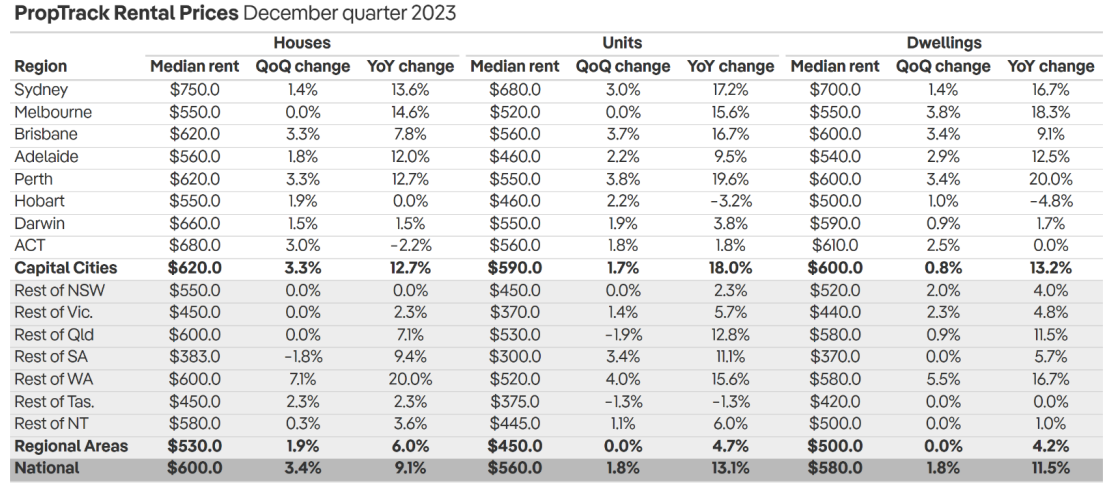
Source: PropTrack
Now PropTrack has released data on rental vacancies, which shows that Australia’s rental market tightened over 2023 although it did at least ease slightly at the end of the year:
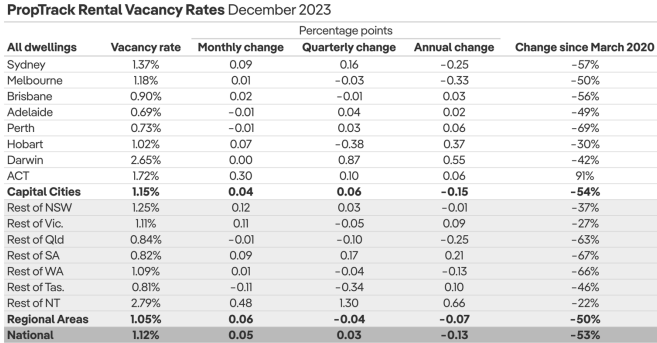
Source: PropTrack
National rental vacancy rates rose slightly in December, up 0.05 percentage points (ppt) to 1.12%. However, they declined 0.13 ppt over 2023.
Separate data from SQM Research compiled by Justin Fabo at Antipodean Macro shows that residential rental vacancy rates declined in Australia to new lows in Sydney and Melbourne, and are zipped tight everywhere:
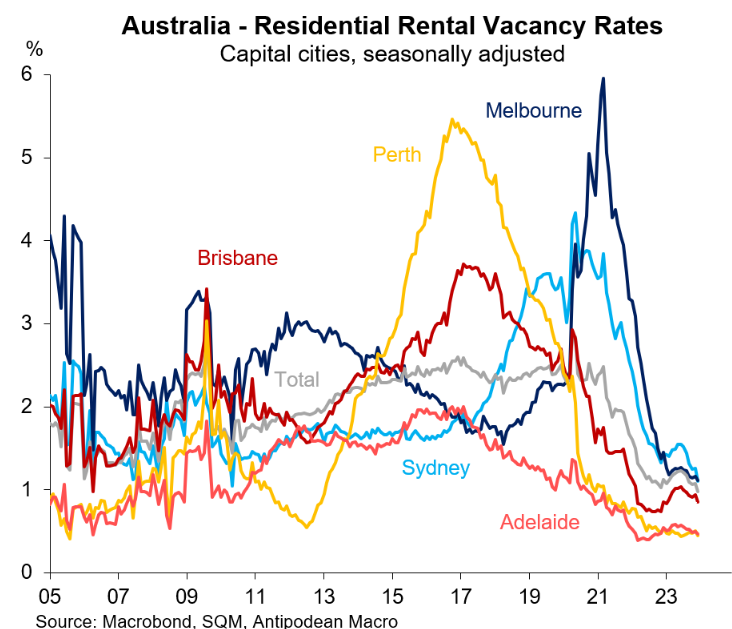
As shown in the above PropTrack tables, vacancy rates have tightened significantly and rents risen the most aggressively across the five major capital cities.
One of the main drivers of this tightness has been the record net overseas migration landing in these markets:
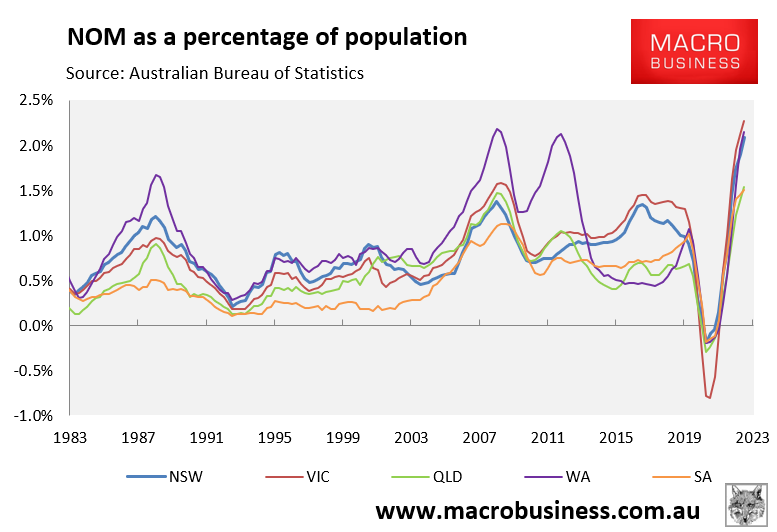
The tidal wave of overseas migrants that have arrived since borders reopened has directly juiced rental demand and price growth.
Commenting on the results, PropTrack warned that renters will continue to face difficult conditions in 2024:
“Rental markets are extremely challenging for renters, with rents continuing to grow very quickly across much of the country amid strong demand and very low vacancy rates”.
“Low rental vacancy rates are indicative of tight rental markets, with tenants competing for limited stock”.
“These conditions made it difficult for many to find an available rental property and drove strong price growth throughout 2023”.
“Many tenants are likely to be spending an increasing portion of their income on rent, placing pressure on household budgets”.
“With the number of vacant properties remaining at low levels, tenants will continue to face challenging conditions”.
Given that Australia’s population is forecast to grow at a historically rapid rate in 2024, as new home construction is falling, rental vacancy rates will remain tight and rental inflation high.
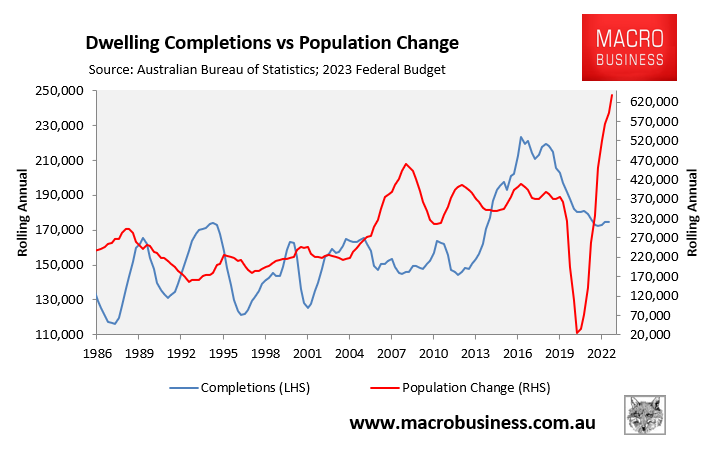
Renters will respond to the shortage by moving into share housing in order to distribute the growing costs among a larger number of people.

